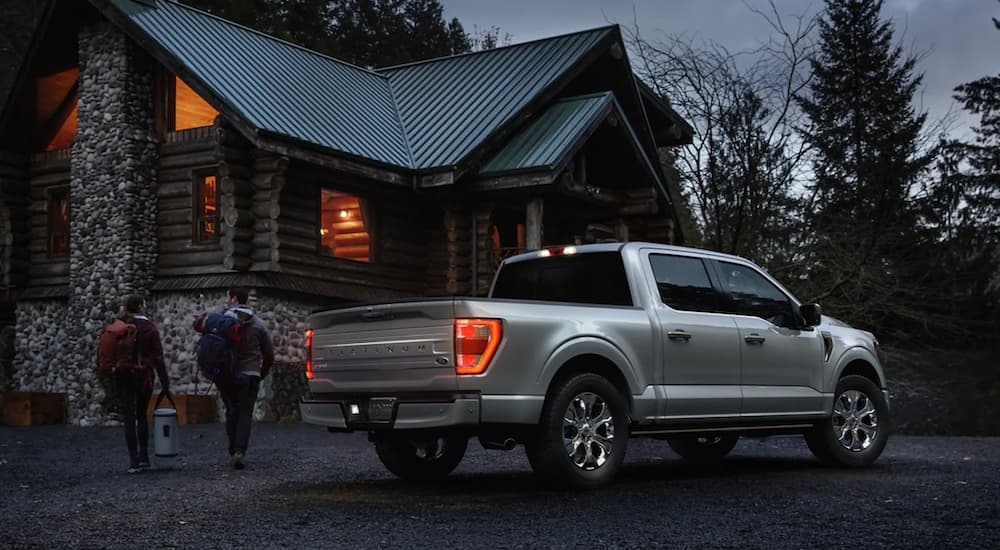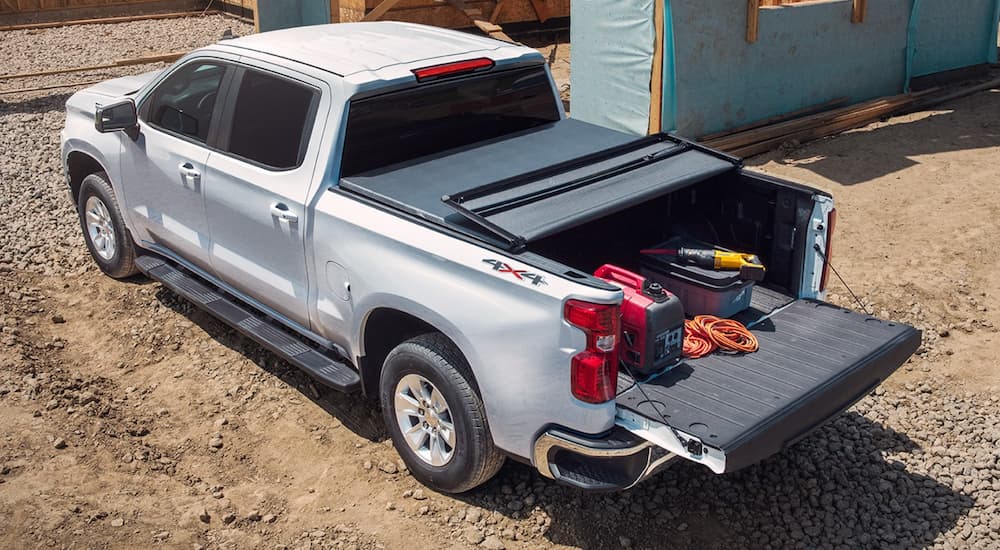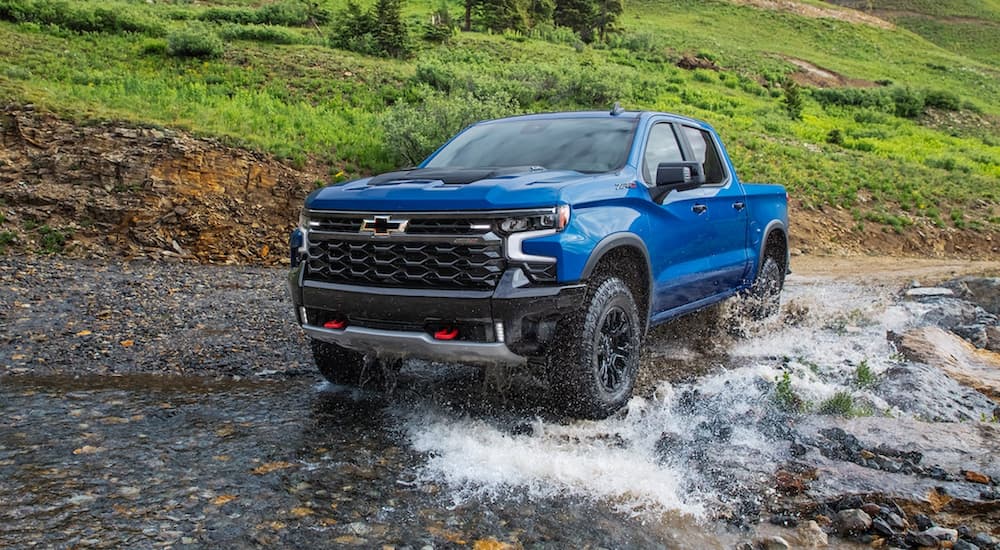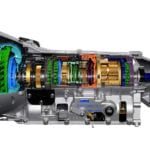Of all the vehicle manufacturers based in the United States, none are more prominent than General Motors and Ford Motor Company. Both have been around longer than any other vehicle manufacturer in the United States. They were founded during the Second Industrial Revolution in the United States, a period when technology was advancing at a breakneck pace. Since their respective inceptions, both GM and Ford have grown into behemoths in today’s car world, going head to head as competitors all the while. The rivalry lives on to this day and is especially demonstrated by the fight of the 2022 Chevy Silverado 1500 vs 2022 Ford F-150, two pickups of the same class. These two trucks are top sellers for their respective brands and are similar in a lot of ways. In fact, GM and Ford have followed complementary paths, leading both of them to a life of success.
First Steps
The Second Industrial Revolution in the United States turned out to be the perfect backdrop for kick-starting a car company. The car was a relatively new concept, with the first successful gasoline-powered vehicle patents being filed in the late 1800s. Steel, chemical, and electric industries were also booming, while major advancements in production were underway. All of this led to a wave of changes in manufacturing that created an opportune environment for our friends Ford and GM.
Ford was founded in Dearborn, MI, in 1903 by Henry Ford, who jump started the company with $28,000 from a total of 12 investors. It was immediately successful, turning a profit in the first year and expanding to international markets (Canada) by 1904. In 1908, Ford introduced the Model T, which would go on to become one of the best-selling cars in history.
As Ford was hitting its stride, a competitor was brewing within its very own state’s lines. Founded in 1908 in Flint, MI, GM was created by William C. Durant with the original purpose of acting as a holding company for his recently-acquired Buick Car Company. It didn’t take long for GM to start acquiring other companies, like Cadillac and Oldsmobile. In an Icarian fashion, Durant tried purchasing Ford as well in 1909. The failed attempt earned him the boot from his board members, but he spent the time productively by founding Chevrolet Motor Company. When Durant returned to GM in 1916, he brought Chevrolet with him.

Coming of Age
Both Ford and GM continued to develop as the years rolled by, each carving out their own spaces in the market. They continued to grow larger and larger, comfortably dominating the industry until the surge of prosperous Japanese vehicle manufacturers in the late 1990s and early 2000s.
Ford didn’t let the rising prominence of GM slow them down and, for the next century, cranked out a slew of achievements. In 1917, Ford’s first truck debuted under the name Model TT. Ford contributed thousands of tanks, planes, and submarines to the Allied forces in World War I and had an even greater impact during World War II, completely shutting down civilian production to focus their efforts on building military equipment. Aside from these feats, Ford successfully created the first commercial V8 engine. Then came Thunderbirds, Mustangs, Fiestas, and Escorts. Not to mention the Corvette, Taurus, and Explorer.
Throughout the 20th century, GM was enjoying substantial growth as well. In fact, as of 1931, GM surpassed Ford as the largest automotive manufacturer in the world, a title they would hold onto for 77 years. They continued acquiring other companies, creating the large web of vehicle brands GM is comprised of today. GM also contributed to several wars throughout history, including both World War I and World War II. In 1939, the first successful automatic transmission, dubbed the Hydramatic, was put in an Oldsmobile. The Oldsmobile was also the first vehicle in the United States to offer the option of adding a passenger airbag, although both GM and Ford would go on to lobby against the inclusion of airbags, stating they were impractical. GM remained one of the largest automobile manufacturers but ran into trouble during the Great Recession, and in 2009, was the recipient of a massive government bailout. Fortunately, GM was able to recover and return to profitability.
Golden Child: The Ford F-150 and Chevy Silverado 1500
The Chevy Silverado 1500 and Ford F-150 were released a couple decades apart, but they’ve been pacing each other since their rivalry began. Currently, both pickups are offered in the public and commercial domain, creating a variety of options for diverse buyers. Both pickups have become each company’s top seller, selling hundreds of thousands of units each year.
The Ford F series has been around and selling in prolific numbers since 1948, although the F-150 wasn’t introduced until 1975. It’s currently in its fourteenth generation. The latest and greatest 2022 Ford F-150 is offered with six different engines, including a hybrid and a V8. The 3.5-liter PowerBoost Hybrid V6 gets up to 430 hp and 570 lb-ft of torque, more than doubling the specs of the first Ford F-150, which came standard with an inline-six that got 117 hp and 223 lb-ft of torque.
Silverado started off as a trim level for the Chevy C/K series and wasn’t its own model until 1999. The 2022 Chevy Silverado 1500 is part of the fourth generation. It has four engine options, including a 3.0-liter Turbocharged Diesel. 2022 will be the first model year the Silverado is offered with a ZR2 trim – Chevy’s high-performing variant equipped with off-road-ready parts straight from the factory. The Silverado 1500 is also offered in several different appearance packages, trims, and has endless add-ons for customers to choose from.
New Horizons
We’re in the midst of a great turning point in the automotive industry. More and more vehicle manufacturers are focusing on creating products that are more fuel-efficient, with a rapidly increasing emphasis on hybrids and fully-electric vehicles. GM and Ford have met this new trend in stride.
Ford announced the release of the all-new F-150 Lightning, a fully-electric pickup. Though it has yet to be released, it’s already garnered nearly 200,000 reservations. The F-150 is already available as a hybrid, along with Ford’s Escape and Explorer. The Mustang Mach-E is another fully-electric offering. Ford has a history of excelling in the commercial sector, and in 2020 they solidified their dominance with the introduction of the Ford Transit EV, making it greener and cleaner to do business.
Not to be outdone by Ford, GM announced its upcoming Silverado EV, slated to release for the 2024 model year. GM has several other electric or hybrid vehicles in its lineup and even produced a fully-electric vehicle back in 1996, the EV1. Chevy also has the Bolt EV and plans to debut electrified versions of the Blazer and Equinox. GMC revamped the Hummer by releasing an all-electric version for 2022, and Buick and Cadillac have teased at plans to release entirely new EVs as well. All of this is in line with GM’s promise to bring 30 new electric cars to the globe by 2025.
A Lifetime Ahead
Ford and GM have both proven that they’re capable of changing as the market demands. The companies have been through countless trials and tribulations, coming out stronger on the other side. With more drastic changes to the industry looming, both have demonstrated a commitment to surge ahead and change in the name of a better future. If competition breeds innovation, the automotive industry has surely benefitted from the long rivalry between GM and Ford.





